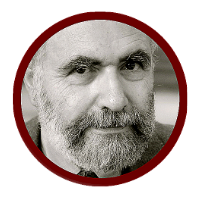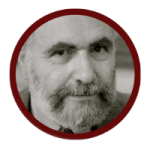Post-Holocaust Europe and the Atlantic Jews.
3. A Golden Age
Soon enough, another and quite unexpected reason emerged to join or to stay in Western Europe. Old Europe, since 1914 the continent of gloom and doom, war and revolution, physical and moral exhaustion, division and crisis, decadence and tyranny, was giving way to a New Europe: optimistic, free, open-minded, united. Whereas the continent’s reorganization after World War I had been a total failure, the Western Europe that emerged from World War II looked increasingly like a success story—even, as was commonly said, a miracle.
What happened, basically, was Americanization. The U.S.—which this time, unlike after the previous World War, had resolved to stay in Europe—was a powerfully benign hegemon. As Western Europe strove to catch up with American standards of living and the American spirit, Washington provided military security both against Soviet expansion and, within Europe itself, between neighbor and neighbor. This in turn boosted regional cooperation and lent credibility to age-old projects for a European confederation.
The thrust toward cooperation and unification helped the Europeans to make optimal use of the Marshall Plan and other American-sponsored mechanisms and regimes, from the Bretton-Woods agreements to the International Monetary Fund, the World Bank, the Organization for European Cooperation and Development, GATT, and beyond. Economic efficiency, combined with the postwar baby boom and the need to rebuild wrecked cities, factories, harbors, railways, and roads led rapidly to prosperity in most West European countries, with full employment, rising wages, and the consolidation or expansion of welfare programs from health care to housing to education. Finally, prosperity fostered political stability, the rule of law, human rights, and religious aggiornamento and tolerance, supplanting, for the first time in a century, the trademark European paradigms of racism, extreme nationalism, and class war.
In spite of occasional setbacks (in particular, the global crisis of the 1970’s) and negative side-effects (including the tendency to forget or to derogate the American role in the European miracle), this virtuous circle would prevail for a half-century. It culminated in the 1989 Western victory in the cold war, the incorporation into the West European fold of almost all of the former Communist countries of Eastern Europe and even three former Soviet republics, and finally the establishment of the European Union in 1993.
And where were the Jews in this picture? Suddenly, they were welcome in Europe as Jews, to a degree unseen since the Emancipation in the late-18th and 19th century. From despised or barely tolerated outcasts, or more or less pitied victims, they became exemplary and even archetypal Europeans, if not the very embodiment of what the new Europe was supposed to be. Their persecution at the hands of the Nazis, a haunting episode that most Europeans would refuse even to discuss in the immediate postwar era, now served to epitomize what the new Europe was not, and whose recurrence it had been designed to prevent.
Not that this Jewish transformation emerged quickly or fully formed. Michel Salomon, then the editor of the French Jewish monthly L’Arche, devoted a prescient cover story in the mid-1960s to the rise of what he called the new “Atlantic Jews,” but it was only some fifteen years later, in 1979, that Simone Veil, a French survivor of Auschwitz and Bergen-Belsen, and a former French cabinet minister, was elected as the first chair of the newly established European Parliament.
Ironically, the rise of Israel, the main destination of postwar Jews leaving Europe, became another important element in the upgraded status and growing self-confidence of those who had opted for Europe. One might have expected the contrary. To be sure, Israel’s achievements had dispelled many anti-Jewish stereotypes, but many West European Jews were cautious about expressing their solidarity with the state, either out of guilt over not having cast their lot with it or out of fear that they might render themselves vulnerable to the charge of dual loyalty.
All such worries were washed away by the extraordinary popularity that Israel enjoyed in the Western world throughout the 1950s, 60s, and (to a lesser extent) 70s—a phenomenon still awaiting thorough study. One reason undoubtedly had to do with the way a “normal”—that is, recognizably Western—Jewish state helped West Europeans cope with, or forget, the otherwise discomfiting and unassimilable memory of the Holocaust. Another reason was that Israel fit certain political fantasies on both the Right and the Left. Conservative Europeans, then very much on the defensive, were delighted to discover in the Jewish state the best of their own values: the primacy of a national and cultural heritage, technological and military prowess, refusal to surrender to the “barbarians.” For their part, progressive Europeans were happy to celebrate the land of David Ben-Gurion, the kibbutz, and the Labor party as the very picture of their own utopian socialist dream come true.
In whichever form it took, Israel’s popularity reflected positively on Jews everywhere: so much so, that the more European Jews identified themselves with the Jewish state, the easier and the more thoroughly they were accepted as bona-fide European citizens. Indeed, the image generated by Israel, in combination with the optimism generated by the European virtuous circle, helped produce a minor virtuous circle inside the Jewish community itself.
Demographically, the postwar baby boom rejuvenated post-1945 West European Jewry, which was then further enlarged by immigrants from Eastern Europe, North Africa, and the Middle East. In France, the Sephardi input was spectacular: between 1945 and 1970, the French Jewish population leapt from under 300,000 to more than 600,000. In Italy, newcomers from Libya and other Mediterranean countries allowed the local Jewish community to maintain its 1945 level (roughly, 40,000 souls) despite emigration and rampant assimilation and intermarriage. In Spain, a shadowy post-Civil War community numbering in the low thousands rose rapidly to 15,000 thanks to immigrants chiefly from Morocco. Smaller inflows benefited other communities from Switzerland to Belgium to Scandinavia.
The quantitative impact of this immigration yielded qualitative results, enabling some communities to reach a sufficient critical mass to sustain Jewish activities. Overnight, it became feasible to provide kosher food, build synagogues, open schools, publish books, and launch media. Sephardi immigrants in particular, being much more traditional and more “ethnic” than the native Ashkenazim, also ranked higher in Jewish self-identification. Despite the internal differences among them—assimilated Jews from Algiers, Casablanca, and Tunis bore little resemblance to the strictly Orthodox Jews from the Moroccan Atlas, the Algerian hinterland, or Jerba in southern Tunisia—all came from countries where religion, for Muslims and non-Muslims alike, was the ultimate defining factor in public as well as private matters.
Jewish daily life was remodeled accordingly. France, which in 1960 boasted 40 kosher butchers in all, today has more than 300 butchers and as many stores, including the major supermarket chains, selling processed kosher foods. In 1960, there were four kosher restaurants in the entire country; today there are one hundred times as many. Where Jewish schools numbered about 40 in the early 1960s, with fewer than 2,000 pupils, today there are 286 schools serving 32,000 pupils. Some 45 percent of all Jewish children attend a Jewish school for at least a couple of years, and most study at least for bar- or bat-mitzvah.
Together with the flourishing market for Jewish services and a more tradition-leaning Jewish profile came greater confidence. Earliest to emerge were pro-Israel political activism, increased proficiency in Hebrew, more talmudic studies, and Orthodox revivalism, soon followed by the discovery of Diaspora subcultures and their languages (Yiddish, Ladino, Judeo-Arabic) and an upsurge in non-Orthodox religious denominations.
In sum, European Jews had entered a golden age, and as news of it spread, more non-European Jews joined the party. In the 1990s and into the first decade of the 21st century, sizable numbers of post-Soviet Jews immigrated to the European Union, chiefly to Germany. Some Israelis, too, moved to Europe, and many others without immediate plans went through the process of reclaiming their parents’ citizenship. For some Jewish or Israeli intellectuals and artists, Europe seemed like a New Jerusalem: more democratic, more promising, and more “Jewish-friendly” than Israel or the United States. There was the benign case of the Rumanian-born Elie Barnavi, a Tel Aviv University professor and briefly an envoy to France who was also closely associated with the Museum of Europe in Brussels and who for a while became a rhapsodist of the EU, which he described as a “democratic Holy Roman Empire.” There was also the grievous case of Avraham Burg, a former Speaker of the Knesset and former head of the Jewish Agency who turned against Zionism and publicly urged his fellow Israelis to procure European passports and leave their own benighted country behind.
End of Part Three
© Michel Gurfinkiel & MosaicMagazine, 2013
Michel Gurfinkiel is the Founder and President of the Jean-Jacques Rousseau Institute, a conservative think-thank in France, and a Shillman/Ginsburg Fellow at Middle East Forum.


